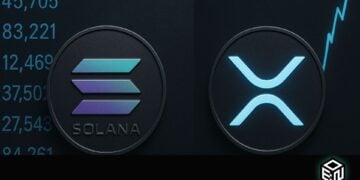Keeping your digital assets secure in cryptocurrency cannot be overstated. Unlike traditional banking institutions, no centralized authority can protect your funds or offer any refund or guarantee in case of a compromised account. Given the decentralized nature of cryptocurrencies, individuals are accountable for the security of their funds, making it crucial for investors to be aware of the necessary security measures to safeguard and store their digital assets.
One of the most critical aspects of securing your cryptocurrency is ensuring the safety of your wallet’s public and private keys. The public key is similar to an account username and identifies the wallet for receiving tokens without revealing the owner’s identity. On the other hand, the private key is identical to a personal identification number and allows access to the wallet for initiating transactions and checking balances. With both keys, the wallet is effectively functional. Therefore, keeping the private key secure is imperative because it provides access to the tokens within the wallet. This is why choosing the right type of wallet is crucial.
Hot vs. Cold Wallet
For those who choose to maintain personal custody of their digital assets, there are two main types of wallets – hot and cold. Hot wallets are connected to the internet. They can be accessed from anywhere and are generally easy to use. Hot wallets are commonly used for day-to-day transactions. Still, they are vulnerable to hacking and theft and more susceptible to phishing attacks, where a scammer tries to trick the user into giving up their login credentials.
In contrast, cold wallets are usually physical hardware devices not connected to the internet, providing greater security but less convenience. They are designed for the secure long-term storage of digital assets. To access and transfer funds, they necessitate the additional step of connecting to a web-based account. As a result, private keys are never inadvertently exposed to an online server, where they might be accessed by unauthorized individuals, adding another layer of protection.
Find What Works for You
Choosing between a hot wallet and a cold wallet is a decision that depends on your requirements and preferences. Each type of wallet has its pros and cons, so it’s crucial to carefully consider these factors to determine the most suitable option for your needs. These factors include:
- Hot wallets are free, while cold wallets cost $100 or more.
- Hot wallets are more convenient, but cold wallets are more secure.
Given the trade-offs, cold and hot wallets are usually ideal. It is common for crypto and NFT users to maintain several wallets for different purposes, allowing them to strike a balance between ease of use and security when managing and trading their digital assets. A general setup of these wallets could include the following:
- Burner wallet – Use this to interact with random sites.
- Trading wallet – Use this to trade and interact with trusted sites.
- Vault – Use this to securely store your assets for a more extended period.
Over time, there has been a convergence of sorts, with hot wallets becoming more secure and cold wallets increasingly convenient. It is still important to note that no wallet is 100% secure, and it is up to the individual to take necessary precautions to protect their digital assets. This includes keeping your private keys safe, using strong passwords, and following security best practices.
In conclusion, when storing your cryptocurrency, you want to keep it safe while striking the right balance between functionality and security. Choosing the correct type of wallet is crucial, and a combination of hot and cold wallets is usually ideal. By taking necessary precautions and following security best practices, you can confidently protect your digital assets and trade.














